Volume of Fluid (VOF), Package for Advanced, Part 1, 10 Learning Products
Original price was: $1,360.00.$229.00Current price is: $229.00. Student Discount
This CFD training package is prepared for ADVANCED users of ANSYS Fluent software in the Multi-phase Volume Of Fluid (VOF) area, including 10 practical exercises.
Click on Add To Cart and obtain the Geometry file, Mesh file, and a Comprehensive ANSYS Fluent Training Video.To Order Your Project or benefit from a CFD consultation, contact our experts via email ([email protected]), online support tab, or WhatsApp at +44 7443 197273.
There are some Free Products to check our service quality.
If you want the training video in another language instead of English, ask it via [email protected] after you buy the product.
Description
Multi-phase Volume Of Fluid (VOF) CFD Simulation Package, ANSYS Fluent Training for ADVANCED Users
This CFD training package is prepared for ADVANCED users of ANSYS Fluent software in the Multi-phase Volume Of Fluid (VOF) area, including 10 practical exercises. You will learn and obtain comprehensive training on how to simulate projects. The achieved knowledge will enable you to choose the most appropriate modeling approaches and methods for applications and CFD simulations.
Water Flow
In project number 1, the two-phase flow of water and air inside an open channel is investigated. Multiphase VOF model using an open channel setting is activated to simulate two phases of water and air inside the channel. The water enters the channel with a mass flow rate of approximately 60Kg/s and its interaction with the air phase inside the channel is simulated.
Project number 2 simulates a two-phase flow (water and air) inside an open channel with a 180-degree arc. The multi-phase VOF model (Volume of Fluid) has been used; Because this two-phase flow is considered free surface currents. Therefore, the VOF model defines different phases of the flow. The open channel flow model has been used because the free surface of water flows inside the canal.
In project number 3, the flow inside a wide-edge spillway is investigated. It should be pointed out that there is an elevation difference between the main and sub-channel for reasons like storing a portion of flowing water. A multi-phase Volume of Fluid (VOF) model is activated to simulate two water and air phases inside the open channel.
Pollution
In project number 4, a Numerical simulation of pollution of the Stagnant river has been done. The VOF model is used to simulate the phases. Pollutant enters the river from a nonuniform profile somewhere in the middle of the river, and it diffuses into the water. Due to its density which is lower than water density, it floats on the free surface of the river.
In project number 5, a numerical simulation of pollution of the Meandering river has been done. The VOF model has been used to simulate and solve the two-phase flow field equations. Pollutant enters the river from two circular inlet profiles somewhere at the beginning of the river, and it diffuses into the water. Due to its density which is lower than water density, pollutants cause the river’s surface to be polluted, and because of the water flow, pollution moves along the river.
Sloshing
In project number 6, Ansys Fluent software has been used to simulate the sloshing of a tanker truck. The Volume of Fluid (VOF) model has been used to simulate and solve the two-phase flow field equations. The primary phase is air and, the secondary phase is water. The truck brakes at the speed of 15 m/s, and after 3 seconds, it stops. This means that the water inside the tanker feels the brake deceleration in addition to gravity acceleration.
Wave (Volume of Fluid)
In project number 7, a numerical simulation of the short wave in the sea has been done. The purpose of this project is to investigate the ability to simulate short waves with First-Order Airy theory in Fluent software and the VOF model with the open channel wave bc has
Airplane Washing
Project number 8 was performed to simulate aircraft washing. The computational domain of a cube with dimensions of 46 x 8.5 x 17, in which a separate part is provided to move the sub-domain of the aircraft using the sliding mesh model. Water enters the computational domain through holes in the bottom of the slope at a speed of 15 meters per second and air in the opposite direction of the plane at a speed of 2 meters per second from the opposite side to model more realistic conditions
Pelton Wheel
The water wheel is an example of Pelton turbine. Most water wheels are mounted vertically on a horizontal axis and mounted horizontally on a vertical shaft. The wheels are perpendicular to certain parts of the turbine due to reduced friction force and increased nozzle thrust. The other part of the turbine is out of water. Therefore, the wheels rotate around their axis in two different phases water and air. In project number 9, The turbine’s diameter is 0.7 m and the boundary of the free surface is 0.2 m below the center of the water wheel. Water velocity is considered 3 to 5 m/s depending on the average river velocity.
Mixing (Volume of Fluid)
Project number 10 simulates mixing two substances in a rectangular tank, including carbon dioxide and ethanol. The VOF multiphase model has been used to simulate the present model. The input flow enters the tank from the lower part with a temperature of 300 K. The inlet flow pressure is variable and time-dependent. For this purpose, the pressure inlet boundary condition at the input boundary is used, with a UDF in the form 8000000 + 66666.666 * t. This simulation process was performed in 180 s with a time step of 0.5 s.
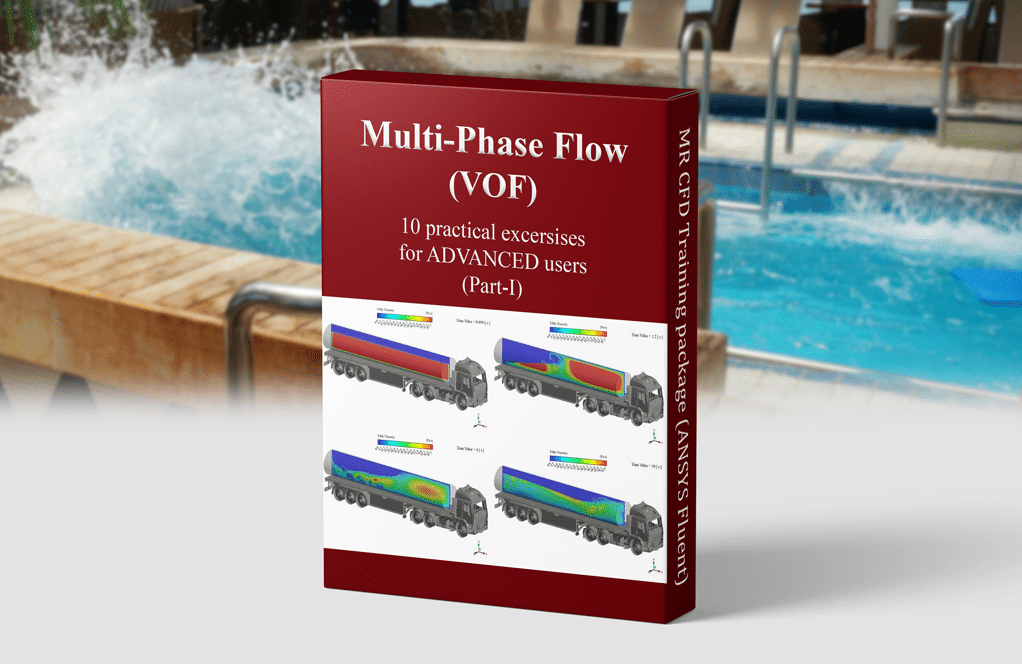




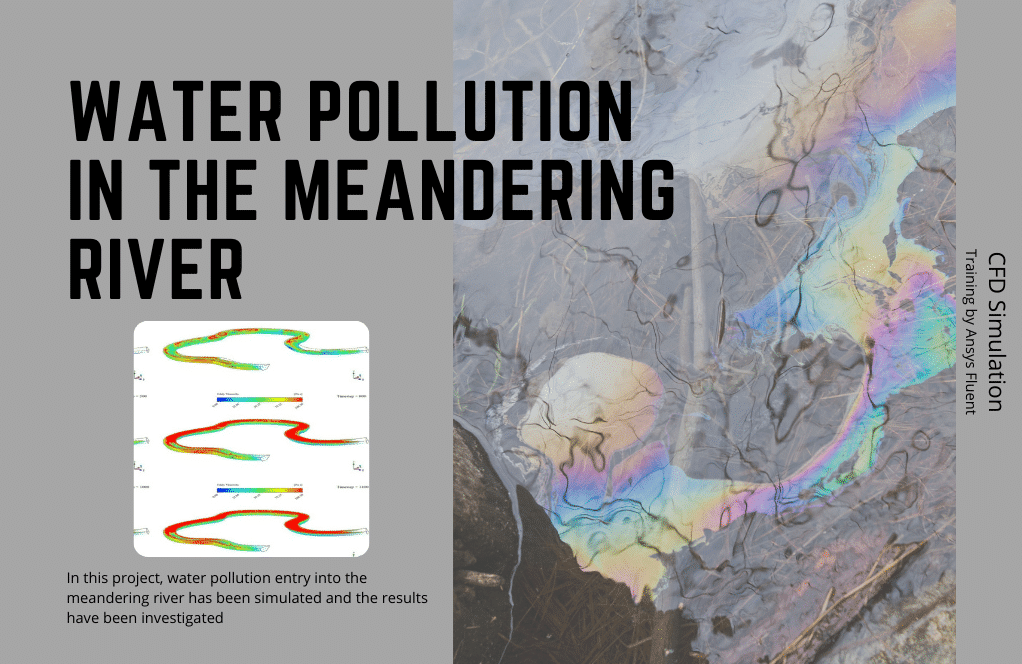

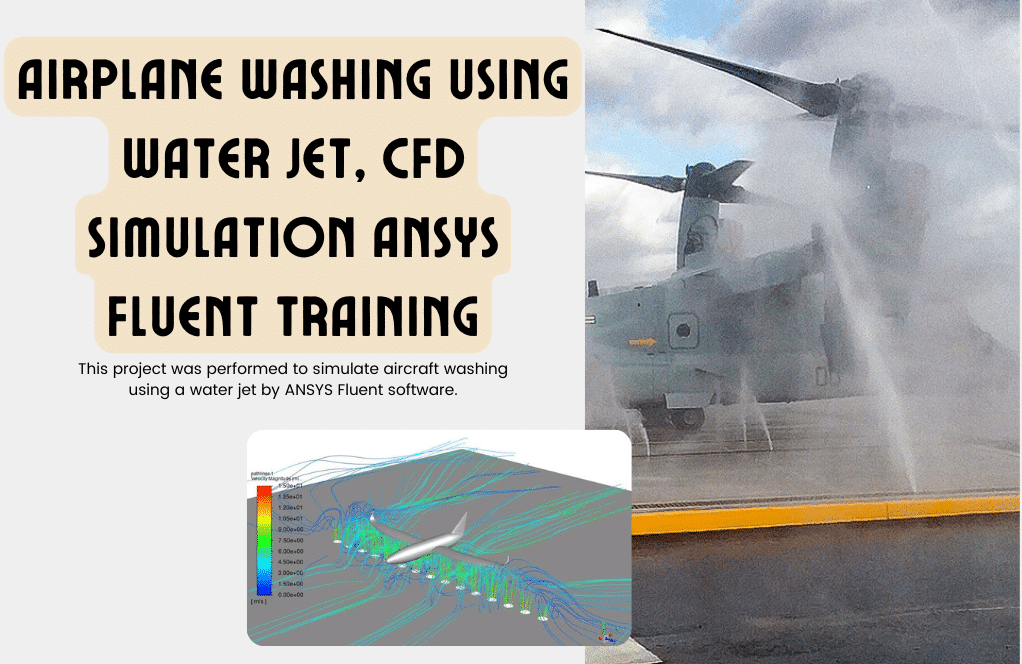
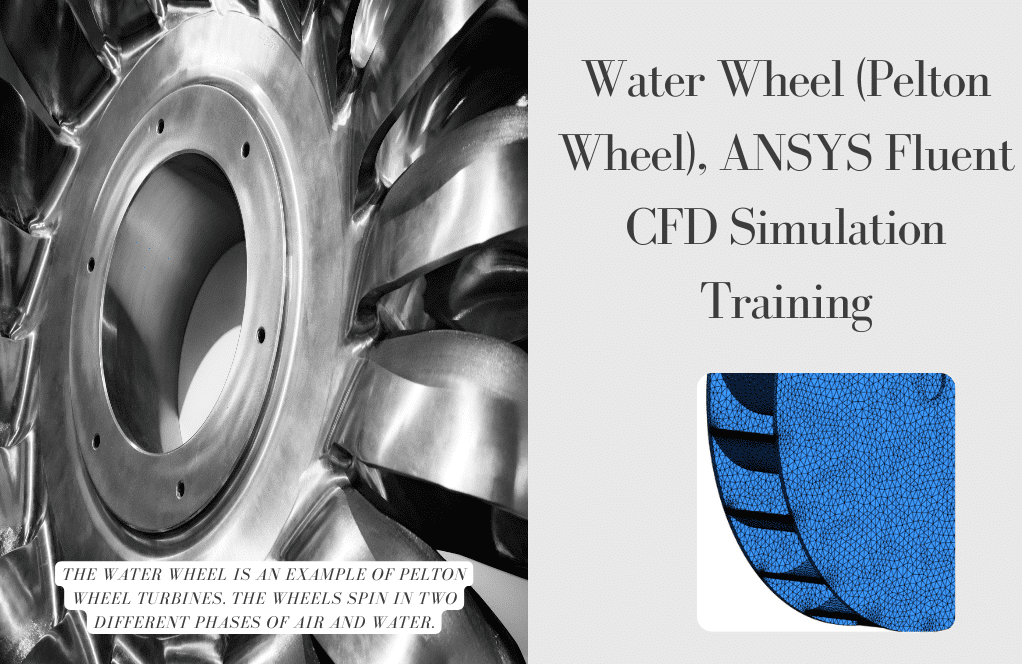
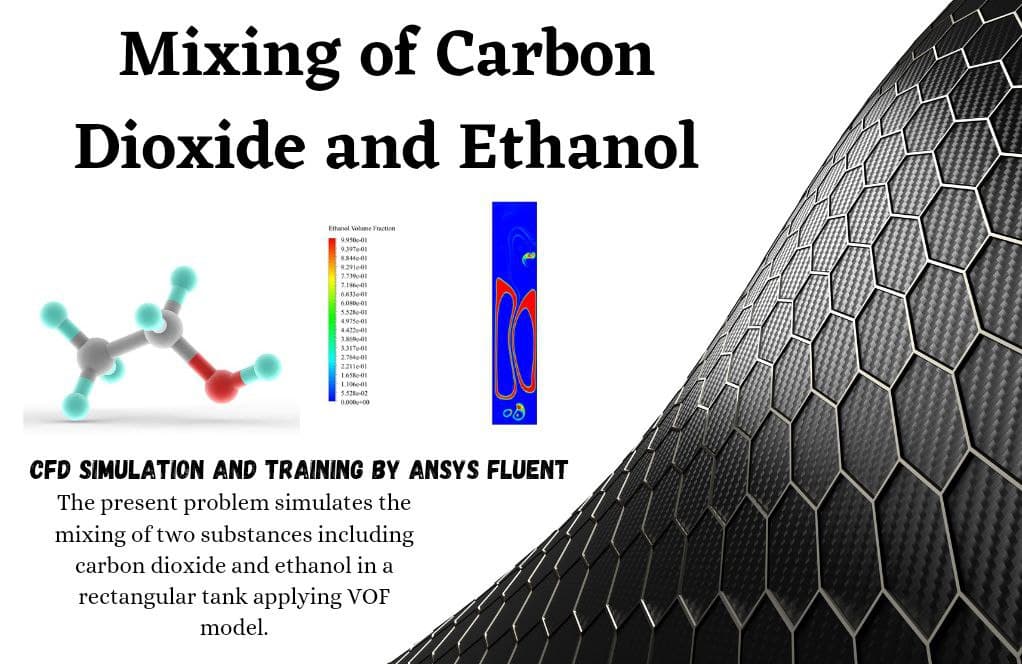
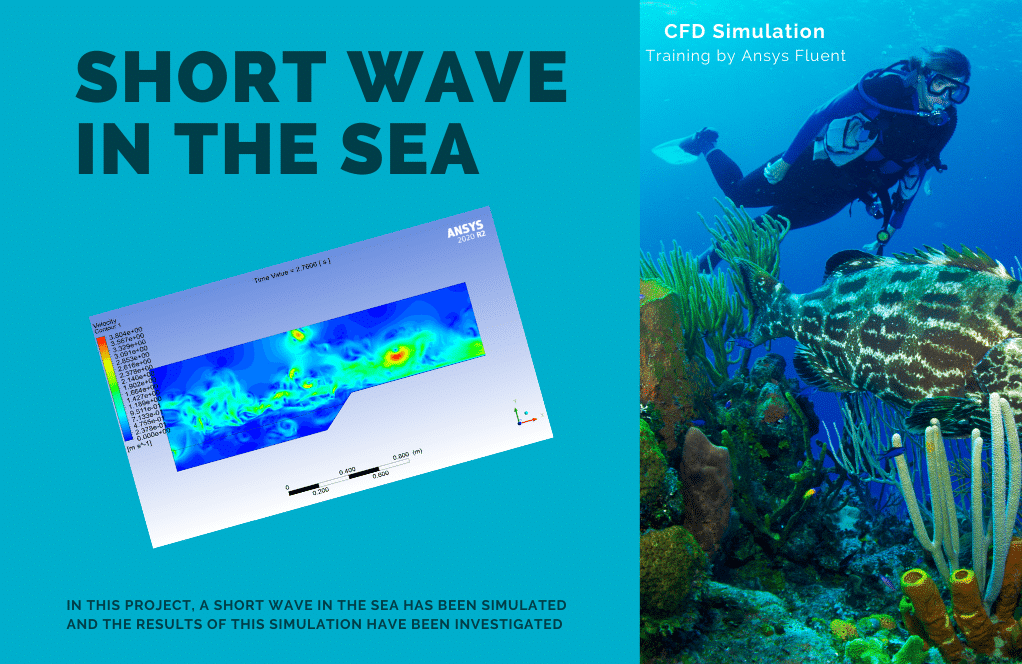

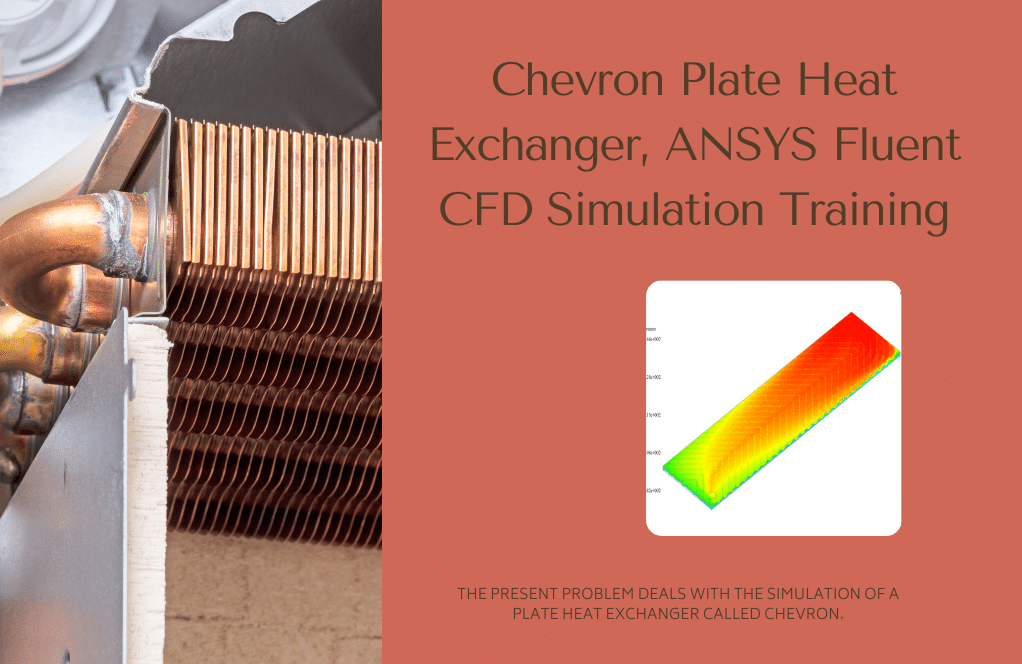
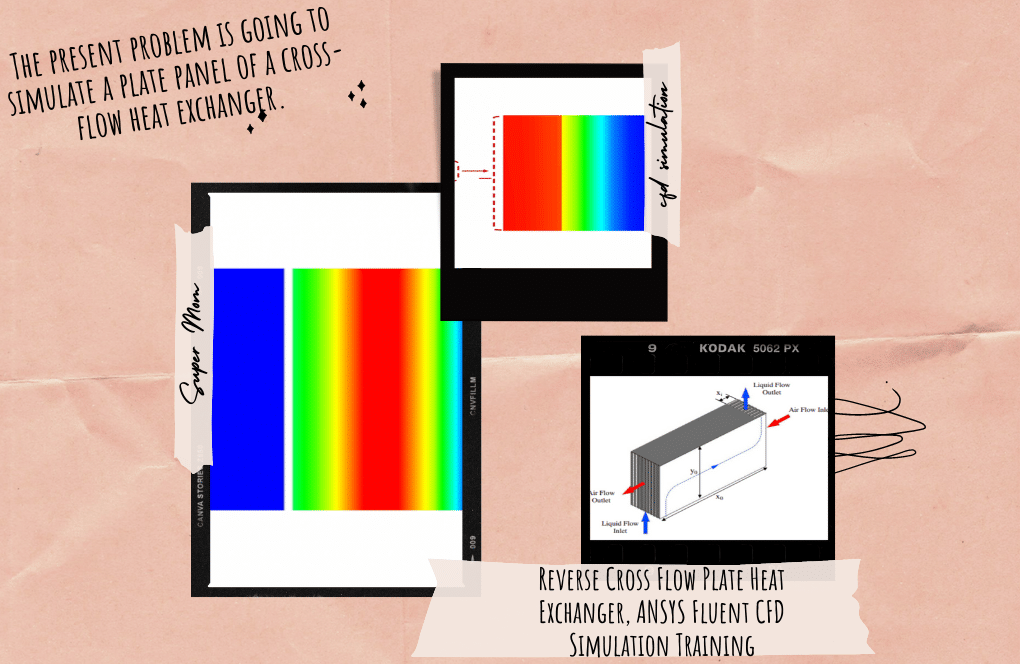
Green Stehr –
The detailed explanation opens a window into the complex world of fluid dynamics. The expertise conveyed through the projects inspires confidence in simulating such intricate scenarios. Immense kudos for offering such profound insights – it’s akin to grasping the very essence of water’s dance with air!
MR CFD Support –
We’re so grateful for your enthusiastic review! It’s wonderful to hear that our Advanced VOF CFD Simulation Package could deeply resonate with your passion for fluid dynamics and provide thorough insight into such simulations. Thank you for taking the time to recognize our commitment to quality and depth in our learning products.
Mrs. Jana Gerhold –
This CFD training package on VOF simulations in ANSYS Fluent seems very comprehensive. I’m particularly excited to learn about modeling two-phase flow. What are some of the common challenges or difficulties one might encounter while learning the VOF model, and how does the course address them?
MR CFD Support –
Some of the common challenges when learning VOF simulations include understanding the interactions between different phases, setting proper boundary conditions, and selecting the right numerical schemes. In this training package, these challenges are addressed by providing practical exercises with step-by-step guidance, supported by case studies and theoretical information that matches the level of an ADVANCED user. This ensures that learners gain hands-on experience and deepen their knowledge by tackling real-world problems within a guided learning environment.
Prof. Jessy Littel –
The Volume of Fluid (VOF) package seems excellent for advanced training. Its variety of project scenarios, such as open channel flows and pollution modeling, is quite impressive.
MR CFD Support –
Thank you for your positive review! We are thrilled to hear that you find our VOF package for advanced ANSYS Fluent users comprehensive and practical. Cheers to growing your simulation expertise!
Kaleb Fritsch –
I recently finished the Volume of Fluid (VOF), Package for Advanced, and I am extremely impressed! The diversity of projects provided a robust understanding of multiphase simulations. I particularly enjoyed the simulation of the Pelton water wheel in project 9, where the VOF model’s capacity to simulate air-water interaction shined. Clear instructions and logical progression through the exercises made complex concepts accessible, enhancing my VOF modeling skills in ANSYS Fluent. Highly recommended for those looking to advance in CFD using Fluent!
MR CFD Support –
Thank you so much for your wonderful review! We’re thrilled to hear that you found the VOF package rewarding and that it has enriched your understanding of multiphase simulations in ANSYS Fluent. Your satisfaction is our top priority, and we’re glad the exercises equipped you with the necessary skills to succeed in your CFD endeavors. We look forward to providing you with further valuable learning experiences. If you have any more feedback or require additional support, please don’t hesitate to reach out. Keep mastering those simulations!
Tatyana Hudson –
Indeed, after going through each project in the advanced multi-phase VOF CFD Simulation Package offered by MR CFD Company, I’m compelled to congratulate the team on compiling such a meticulously detailed and comprehensive set of tutorials. The diverse range of applications, from environmental studies of river pollution to the intricate workings of a Pelton wheel, is simply fascinating. Each project provides a practical approach towards a real-world problem, clarifying the nuances of multiphase simulations with the Volume of Fluid method. Project 8, which centers on aircraft washing simulations, remarkably ties in engineering practicality with real-world application, ensuring that key aerodynamic principles aren’t compromised while upkeeping cleanliness. Kudos to the entire team for such an educational array of simulation exercises.
MR CFD Support –
We deeply appreciate your thoughtful review of our Volume of Fluid CFD Simulation Package. It’s genuinely rewarding to hear that our efforts to provide a broad spectrum of advanced simulations have been well-received. Your acknowledgement of our project on aircraft washing, along with others, reassures us that our approach to combining theoretical learning with applied skills can add significant value to anyone looking to enhance their expertise in CFD. If you ever have any questions or need further insights into any of our projects, please don’t hesitate to contact us. Thank you for choosing MR CFD Company for your learning journey!
Ervin Dach –
I’ve completed Project 1 from the VOF package and I must say it was enlightening. Learning to simulate two-phase flow in an open channel was truly fascinating. Could you elaborate more on the results interpretation in separating air from water phases in these simulations?
MR CFD Support –
The process of separating air from water in two-phase flow simulations involves analyzing volume fraction contours generated by the VOF multiphase model. Through these contours, you can clearly see airspace as the volume fraction of air approaches one, and water spaces where the volume fraction of water is closer to one. Sharp interfaces indicate a clear separation. Detailed review of pressure and velocity contours also aids in understanding the interaction dynamics between the two phases.